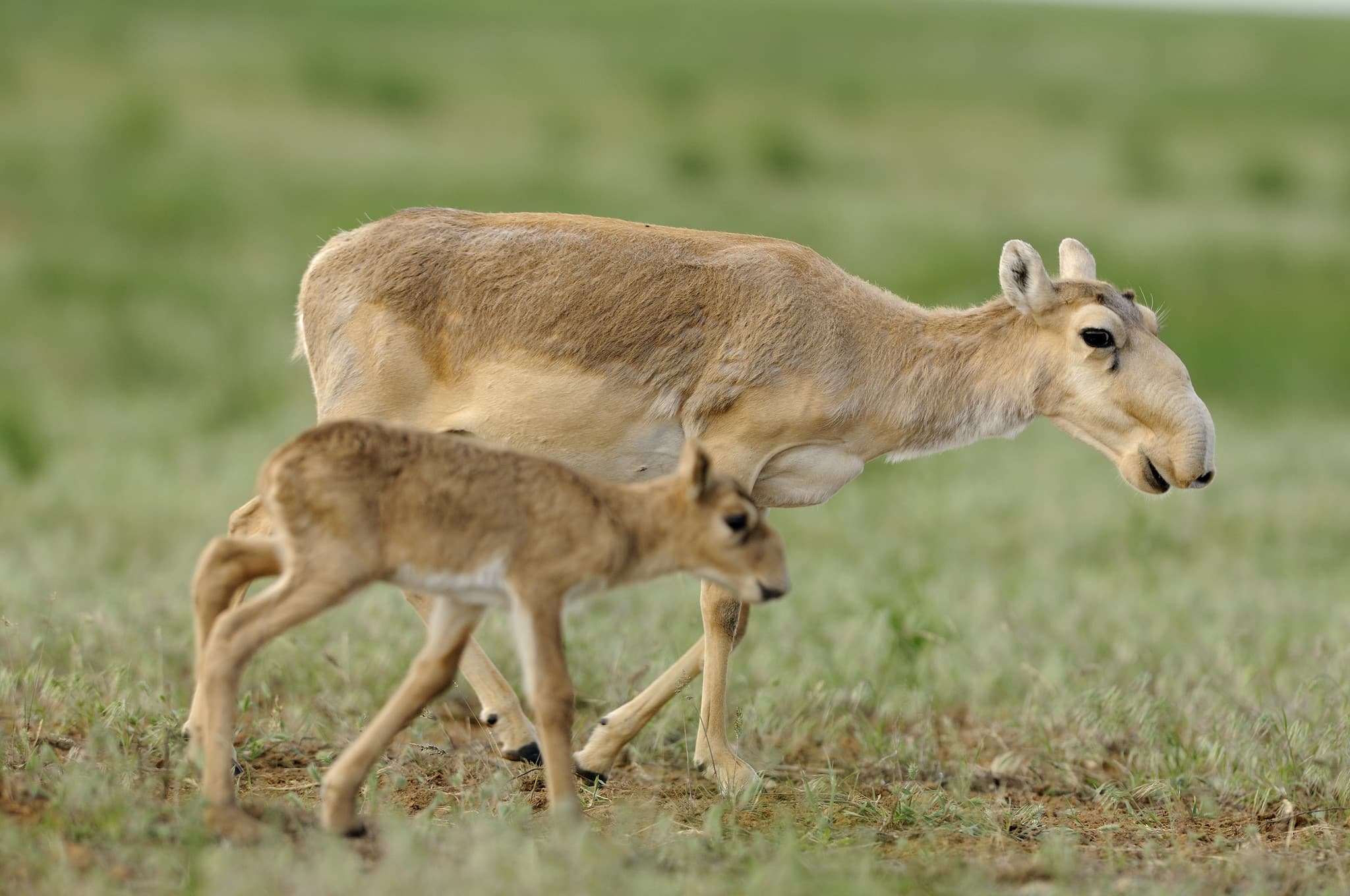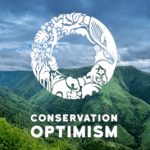Wondering what went right this year in the conservation world? We’ve got you covered with our Conservation Optimism Round-Up! We have collated 12 stories of optimism (one from each month) from around the globe for that final dose of motivation of 2023. Happy New Year 2024.
1. January: World’s Largest Known Manta Ray Population Found Off Ecuador.
” In other regions, we typically have population estimates of 1,000 to 2,000 animals, which makes this species very vulnerable,” says Joshua Stewart, a co-author of the study, which was published in Marine Ecology Progress Series. “In this area, we’ve estimated that the population is more than 22,000 mantas, which is unprecedented “
🥳 Let's start 2️⃣0️⃣2️⃣3️⃣ off with some #OceanOptimism! Great news for #MantaRays, our #oceans, and #scuba divers in my latest piece for @scubadivingmag @PADI https://t.co/LlWNkpifES 🧵
— Tiffany Duong — Writer & Explorer (@TiffMakesWaves) January 4, 2023
2. February: Brazil’s Amazon deforestation down 61% in January
” That amounts to the equivalent of 22,000 football pitches, but is a huge decrease on the 430 square kilometers of deforestation in January 2022, when far-right climate change skeptic Jair Bolsonaro was in power.”
Brazil's Amazon deforestation down 61% in January https://t.co/Q1hwUkGQ1a #conservationoptimism
— B-ONE (@BeingOne_) February 14, 2023
3. March: Ocean treaty: Historic agreement reached after decade of talks
” The High Seas Treaty aims to place 30% of the seas into protected areas by 2030, to safeguard and recuperate marine nature. The agreement was reached on Saturday evening, after 38 hours of talks, at UN headquarters in New York. “
Still a lot of work to be done to get countries to sign on, but big step in the right direction. 🌎 🌍 🌏 #conservationoptimism #oceans https://t.co/j7Dg7n1wcs
— Dr Grainne McCabe (@grainne_mccabe) March 5, 2023
4. April: The 2023 Whitley Award winners were announced this week
” The 30th edition of the ‘Green Oscars’ was held at the Royal Geographical Society in London this week, celebrating seven grassroots conservationists identified after a worldwide search for locally led solutions to the global biodiversity and climate crises “
2023 Whitley awards for conservation – the winners in pictures | Environment | The Guardian https://t.co/TomPyGj51j
— Ewaso Lions (@EwasoLions) April 28, 2023
5. May: Wind is main source of UK electricity for first time
“In the first three months of this year a third of the country’s electricity came from wind farms, research from Imperial College London has shown. ”
Wind turbines have generated more electricity than gas for the first time in the UK.
— Nina Seale (@ninawild_writes) May 12, 2023
In the first three months of this year a third of the country's electricity came from wind farms, research from Imperial College London has shown.https://t.co/QudmmBeSfL #EarthOptimism
6. June: EJ Milner-Gulland (Founder of Conservation Optimism) made a Dame in the UK King’s Birthday Honours List
“Congratulations to Conservation Optimism Founder and Chair of the Board for being awarded a Damehood in the UK for services to International Biodiversity Conservation. Her passion and dedication to nature and conservation, should serve as an example for us all and encourage us to feel positive and take action for nature.”
👏👏SO proud of our SCA founder and chair, @EJMilnerGulland, she does such incredible #conservation work, her passion for the natural workd is second to none, and we are so lucky to have her leading our team.🎉🎉
— SCA (@SaigaCA) June 17, 2023
more here: https://t.co/4l2Yq9sWjw https://t.co/SzoVLJoqtK
7. July: Lions, leopards have made a comeback in Africa’s 3rd-largest national park, says report
” Scientists found leopard densities in southern KNP increased threefold — from about 1.5 leopards in 2019 to approximately 4.4 leopards per 100 square kilometres in 2022. “
Thanks to #conservation efforts, large cat populations in the #Kafue #NationalPark of #Zambia are recovering, with a threefold increase of Leopards from 2019 to 2022!#speciesrecovery #lions #conservationoptimism #LetNatureThrive Photo: Billy Dodsonhttps://t.co/IdvFe4Eq6Y pic.twitter.com/nq2nrSTSgu
— Global Conservation Solutions (@_GCS_) July 5, 2023
8. AUGUST: Panama grants legal rights to sea turtles, boosting ‘rights of nature’ movement
” The new law will allow any Panamanian citizen to be the voice of sea turtles and defend them legally,” Veelenturf said in a text message as she boarded a plane to Panama City after her group’s work near Armila. “
Panama grants legal rights to sea turtles, boosting 'rights of nature' movement. https://t.co/6FZY2EpMMM #conservationoptimism
— InternetOfElephants (@ioelephants) July 31, 2023
9. SEPTEMBER: New global biodiversity fund to restore nature worldwide by 2030 officially launches
” Representatives of 185 countries officially agreed to launch a new fund to ramp up investment to nations in meeting goals outlined in the Global Biodiversity Framework. “
The new @theGEF Global Biodiversity Framework Fund (GBFF) is great news for #biodiversity providing funding for the 2030 GBF. But more $$ is needed + learning from past GEF projects more focus on ensuring and measuring #impact will be essential https://t.co/nPT2OOgBRU
— Jonas Geldmann (@jgeldmann) August 28, 2023
10. OCTOBER: Brazil extends Amazon fishing ban to protect endangered Pink River Dolphins
” A moratorium on fishing the piracatinga catfish in the Brazilian Amazon was extended for the third time since its introduction in 2014. Its aim was to protect the pink river dolphin (Inia geoffrensis), known locally as the boto, which are caught to be used as bait for the catfish. “
On #InternationalFreshwaterDolphinDay, let's share some good news! 🐬
— Synchronicity Earth (@SynchEarth) October 24, 2023
A fishing ban in the Brazilian Amazon has been extended – for the third time since it was introduced – to help protect Endangered pink river dolphins.#Brazil #ConservationOptimismhttps://t.co/MD8BHbTVoc
11. NOVEMBER: Protecting Rwanda’s mountain gorillas through tourism
Learn more about how the African Wildlife Foundation’s successful conservation-based tourism program in Rwanda, which is restoring the Volcanoes National Park and its mountain gorillas while also empowering local communities with new jobs and sustainable livelihoods!
Rwanda's mountain gorilla tourism is not just a success story, it's an economic powerhouse. Learn how conservation investment is fueling community resilience, job creation, and economic growth, all while safeguarding these incredible creatures. https://t.co/lteSi23PXW pic.twitter.com/vRq7rYgQcN
— AWF (@AWF_Official) November 2, 2023
12. DECEMBER: The Saiga Antelope: Conservation works – with persistence, coalition-building, good faith, and a dose of luck
” The IUCN Red List status assessment of Saiga antelope (Saiga tatarica) has been changed from Critically Endangered to Near Threatened, thanks to effective national and international conservation efforts. This substantial positive change in global Red List status – a rarity in conservation – reflects the remarkable recovery of saiga populations in Kazakhstan, which have recovered from a perilously low estimate of just 39,000 in 2005 to now over 1.9 million.”
What an amazing vidication of #ConservationOptimism! The #saiga was today moved from Critically Endangered to Near-Threatened on the @IUCNRedList Here I share my thoughts on this milestone moment https://t.co/KmQIr2X678 pic.twitter.com/M7oMwgdiKx
— EJ Milner-Gulland (@EJMilnerGulland) December 11, 2023
Have a story to share for our weekly round-up? Use #ConservationOptimism on Twitter, Facebook, LinkedIn and Instagram!


